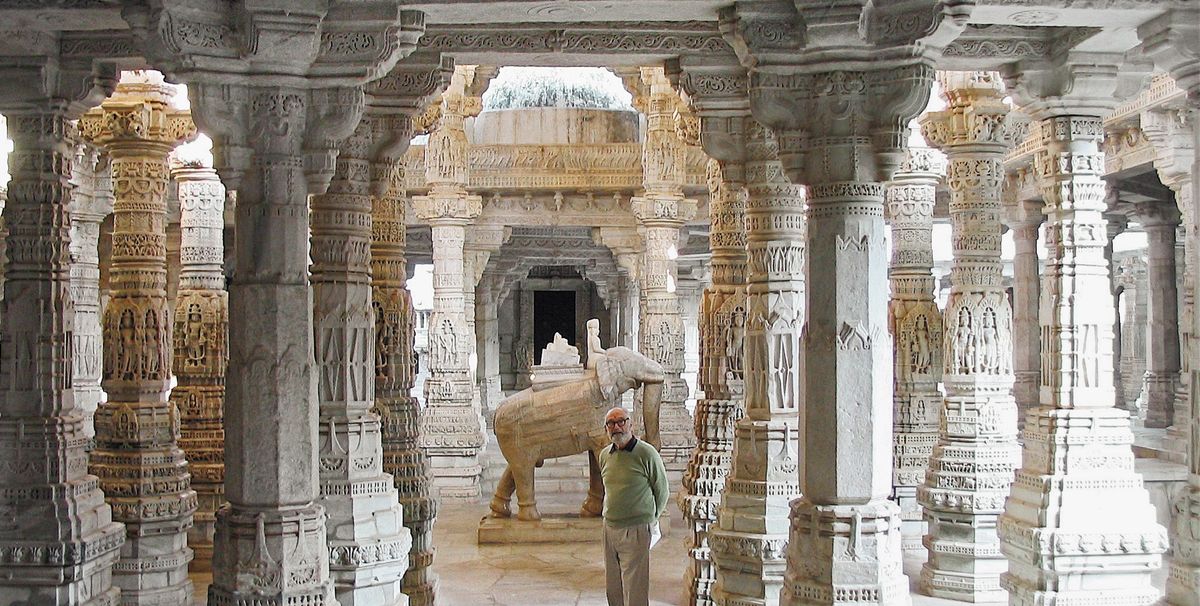As he approaches his century—he was born in 1919—it is a pleasure to welcome James Ackerman’s latest collection of eight very varied essays in Origins, Invention, Revision, and to note that he is as inquisitive, as lively and as wide-ranging as he ever was. His account of the Louis Vuitton Foundation building in the Bois de Boulogne, by Frank Gehry, which opened two years ago after a near-decade gestation, shows him responding more enthusiastically to the latest achievement than he might to some acknowledged historical masterpiece. Though the account is—perhaps inevitably—rather a summary, it does pay tribute to Gehry’s extraordinary verve and his inexhaustible talent in proposing unprecedented forms, and to relate their invention to his passionate involvement with the work of several contemporary artists.
How these forms are first conceived and circumscribed remains something of a mystery though. Gehry is an inveterate and incorrigible doodler and the way the innovative shapes are arrived at, from the earliest doodles through a process of computer readings and three-dimensional models, though outlined, would require much more space than he is given here.
But Ackerman begins more conventionally with two essays on “origins”. First that of the sketch, which makes Pisanello the father of the practice, and his drawings, recording the famous arrival of the Byzantine Emperor John VIII and Joseph the Patriarch for the Council of Ferrara, are presented as the first essay in visual journalism, though the problem of how earlier painters planned their works is not really addressed. His account of the birth of his own practice—that of a historian of art—opens with a bang: Vasari’s Le Vite, but then calls on the many witnesses from antiquity to extend the notion of such a history back into the remote past.
In lively contrast, there is an account of his brief wandering in wartime Italy and his discovery of the splendours of Mantua, all illustrated with his own lively drawings and some rather vivid—near-Expressionist—watercolours.
The central essay, however—and the longest in the book—is on the concept of magnificenza as it is invoked by Paolo Paruta’s neo-Aristotelian (though it might perhaps be more accurate to call them anti-Aristotelian) writings that the extolling of the active against the contemplative life is of greater use to the social fabric, which he sees displayed in Palladio’s late works—both in the Vicentine palaces and in the Venetian churches—particularly San Giorgio and the Redentore. This is aided by some fascinating—though also somewhat questionable—computer simulations of the original, but abandoned, projects which display giant, detached porticoes such as Palladio imagined but had never managed to achieve in Venice. Although the little “pantheon” he built at Maser, next to the splendid Villa Barbaro, offers a miniature version of such a feature; a feature whose brilliant future he traces in Turin, Vienna and Paris, as well on selected sites in the US.
Another essay shows him examining a quite different technical question, that of the early processes of photography and how they played into the fascination with the contrast between the picturesque and the beautiful, which occupied so many brilliant minds between the mid-18th and the mid-19h centuries, and involved, recorded and transformed the view of nature and of the landscape in the origins of Romantic movement—and its main architectural equivalent, which was the revival of a Gothic “style”. Though I would have welcomed some sense of its vitality: from Pugin’s engraving construction details on his sailing boat to Morris’s saying: “If you can’t weave a tapestry with one hand while writing an epic with the other you might as well shut up.”
Still, I could not follow him in all his peregrinations: the attempt to offer evolution as a biological analogue to the art historians’ attempt to account for the fatally uneven changes in the material of his study seems to limp along only to expire in an apology.
The closing essay records—with a bow to E.M. Foster—Ackerman’s own A Passage to India—in particular, his visit to the vast Jain temple at Ranakpur in Rajasthan. But it does not turn out to be his most fertile hunting ground—perhaps because he does not meet his equivalent of Dr Aziz—though he certainly does convey his infectious enthusiasm for the unfamiliar forms.
Perhaps what I am really missing in all this brilliant exposition is a little more oscuro to spice up all the chiarore that Ackerman brings to all the themes with which he undertakes to involve himself.
• Joseph Rykwert is the emeritus professor of architecture at the University of Pennsylvania. His recent publications include The Seduction of Place, The Judicious Eye and The Dancing Column
Origins, Invention, Revision: Studying the History of Art and Architecture
James S. Ackerman
Yale University Press, 232pp, £25 (hb)


